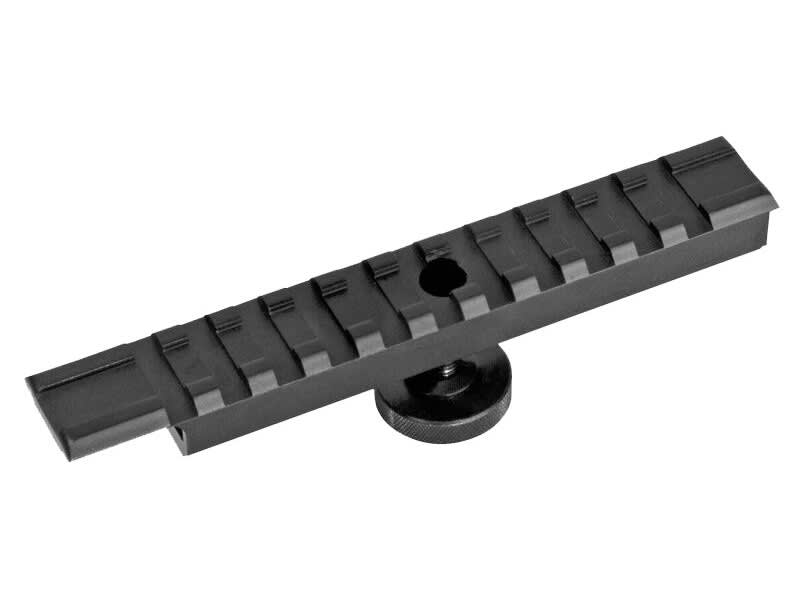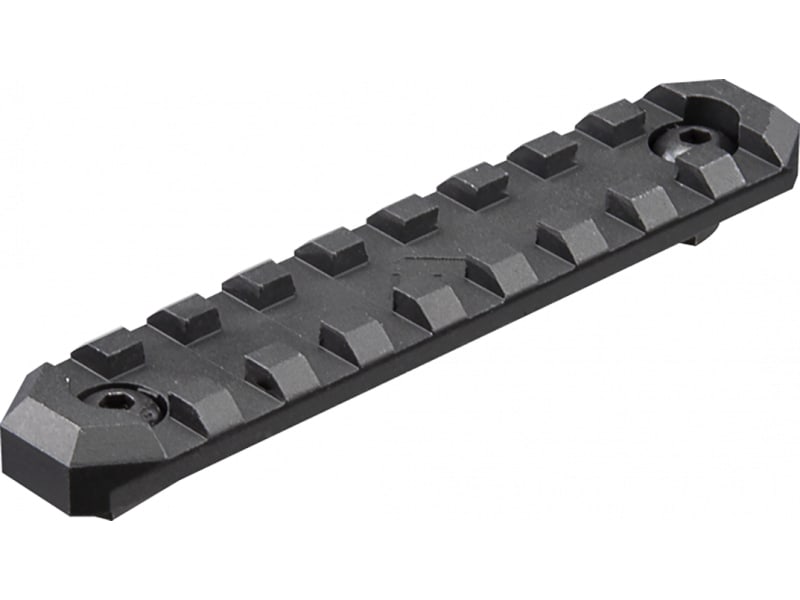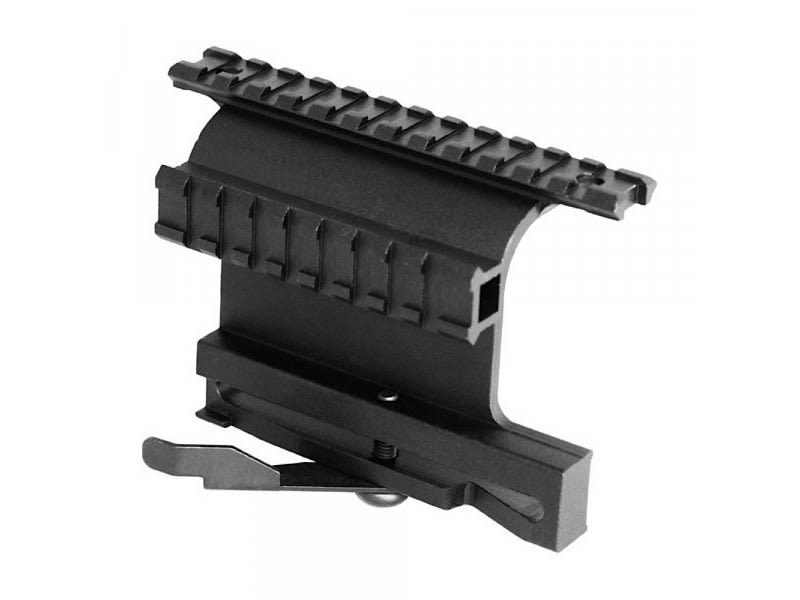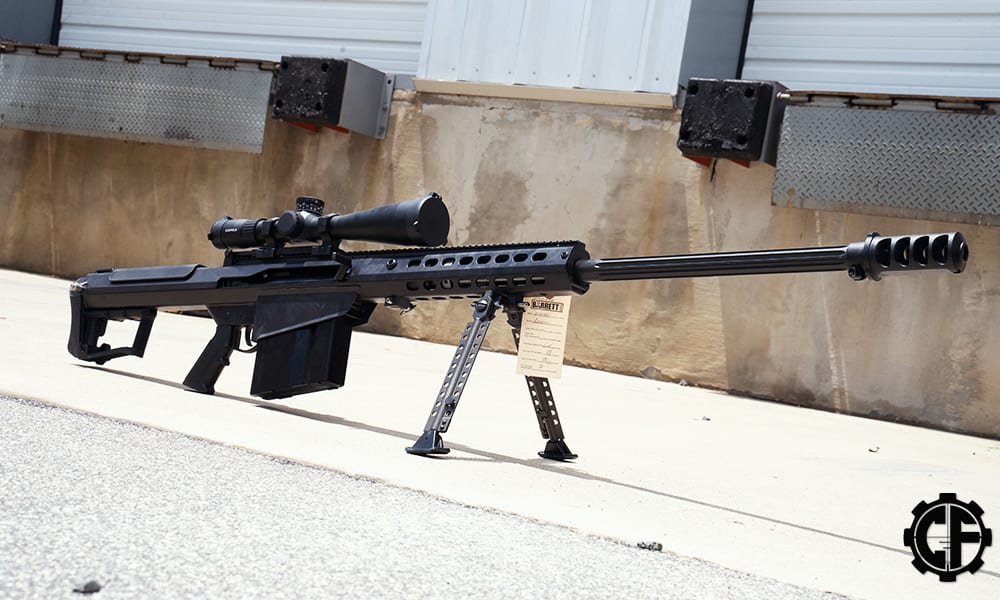The Weaver and Picatinny fixed rail mounting systems represent two of the most significant developments in the history of firearms.
Each may be used to attach a variety of shooting accessories including scopes and optics, but the more recent Picatinny rail has a decisive advantage over its predecessor. This has resulted in the Picatinny rail becoming standard on most platforms.
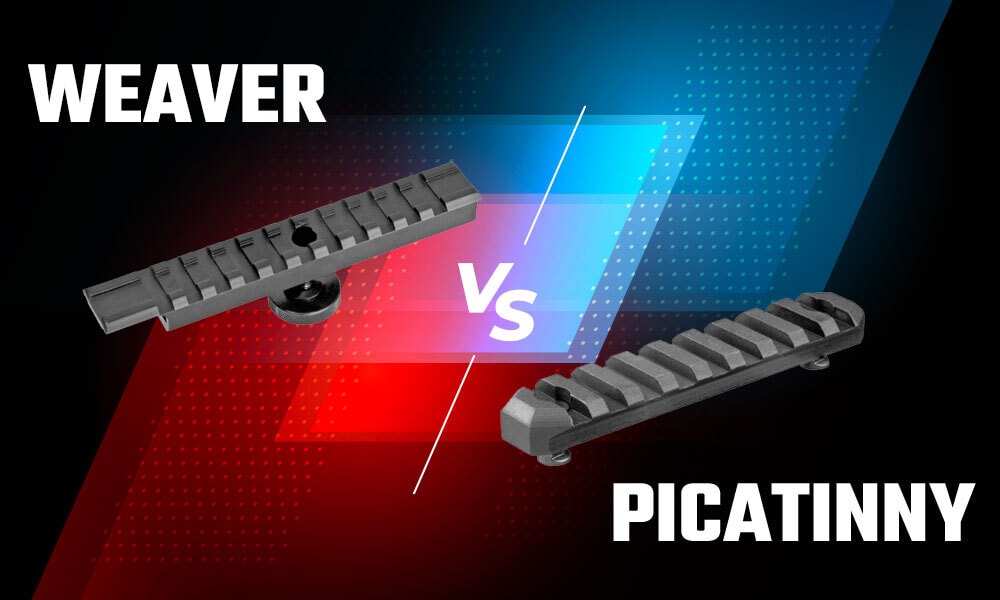
What Was The Weaver Rail?
Developed in the mid-20th century, the early Weaver rail consisted of two pieces of metal with perpendicular slots that were affixed to the receiver a set distance apart. Tolerances had to be exact to ensure a perfect fit and precise point of impact once the optic was mounted.
Later variations shifted to a single-piece design, though several flaws persisted which eventually led to the failure of the Weaver rail system.
Weaver Handle Mounting Rail For AR-15 Rifles
Drawbacks Of The Weaver Rail
The slots in Weaver rails were primarily used for clearance when tightening the optic to the mount. Most Weaver-compatible optics did not include a crossbar that ran through the slot to provide added stability, which resulted in less secure placement and could even result in unintentional side-to-side canting.
Moreover, there was a great deal of variance in the dimensions of the rail / slots which limited the number of accessories that could be mounted. A more uniform solution was needed for military and law enforcement organizations where parts compatibility was a pressing concern.
Origins Of The Picatinny Rail
The Picatinny system was developed to standardize the accessory rails on military rifles. More specifically, it was an improvement over the various Weaver-style rails that were available at the time that ensured greater compatibility with most attachments.
Lights, laser modules, red dot optics, and magnified scopes are affixed to the firearm by sliding the accessory onto the Picatinny rail. They are then secured in place utilizing a hexagonal bolt that is tightened through any of the uniform cross sections cut into the rail.
Due to its accessibility and ease of use, the Picatinny rail was officially adopted in 1995 and saw widespread use among military and law enforcement as well as with the civilian market.
Aim Sports M-LOK 9 Slot Picatinny Rail Adapter
Aim Sports Dual Side QD Picatinny Rail Mounting System For AK-47 Rifles
Picatinny Proven Effective
Manufacturers were quick to capitalize on the popularity of the Picatinny rail system by introducing standardized accessories that did not require the use of proprietary tools. This trend continues today, with most optics and accessories including an option for Picatinny mounts.
In fact, many firearms include a Picatinny rail as standard right out of the box - making it easy for shooters to personalize their pistol or rifle however they choose.
The Stag-15 3 Gun Series Rifle With A Scope Attached To The Top-Mounted Picatinny Rail
An Enduring Standard
Even with other more modular mounting options becoming available, the Picatinny rail has endured for nearly three decades. It is an improvement over earlier Weaver-style systems in every conceivable way and has demonstrated supreme reliability, as well as compatibility with a staggering number of accessories.
This allows for greater customization so a single firearm can quickly and easily be adapted to a variety of applications without sacrificing performance. As such, the Picatinny rail will likely continue its service for many years to come.


